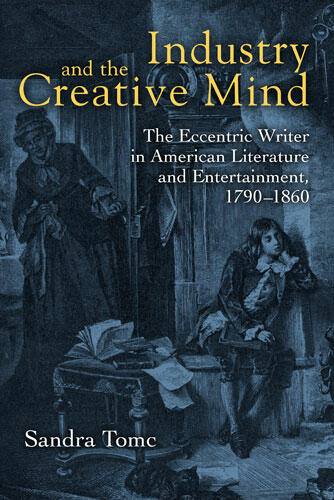Industry and the Creative Mind
The Eccentric Writer in American Literature and Entertainment, 1790-1860
A new look at the "eccentric author" figure in early nineteenth-century America
Description
Industry and the Creative Mind takes a radically new look at the figure of the eccentric, alienated writer in American literature and entertainment from 1790 to 1860. Traditional scholarship takes for granted that the eccentric writer, modeled by such Romantic beings as Lord Byron and brought to life for American audiences by the gloomy person of Edgar Allan Poe, was a figure of rebellion against the excesses of modern commercial culture and industrial life. By contrast, Industry and the Creative Mind argues that in the United States myths of writerly moodiness, alienation, and irresponsibility predated the development of a commercial arts and entertainment industry and instead of forming a site of rebellion from this industry formed a bedrock for its development. Looking at the careers of a number of early American writers---Joseph Dennie, Nathaniel Parker Willis, Edgar Allan Poe, Fanny Fern, as well as a host of now forgotten souls who peopled the twilight worlds of hack fiction and industrial literature---this book traces the way in which early nineteenth-century American arts and entertainment systems incorporated writerly eccentricity in their "logical" economic workings, placing the mad, rebellious writer at the center of the industry's productivity and success.
Sandra Tomc is Associate Professor of English at the University of British Columbia.
Reviews
"Sandra Tomc’s original, erudite, lucidly written, and strenuously argued book ... persuasively demonstrates that the eccentric writer was, in fact, central to the industrialization of American literature, less as a reaction or mode of ideological critique than as a fundamentally generative and structuring force."
- Edward Cahill, Fordham University
—Nineteenth-century Literature
"For in almost every analysis Tomc engages in, she reverses our conventional understanding, showing the ways in which rhetorical constructions and economic structures are dynamically and mutually self-defining. The unrelenting counterintuitiveness that enlivens Tomc’s methodological approach to print culture is as exhilarating as it is challenging."
- Adam Gordon, Whitman College
—Early American Literature

